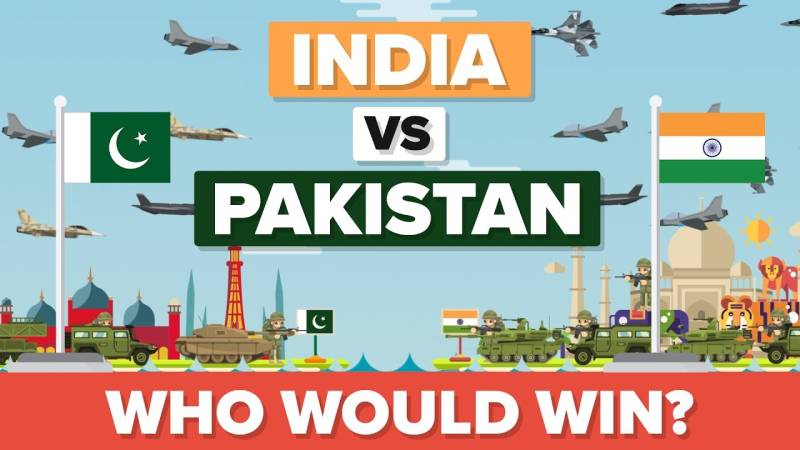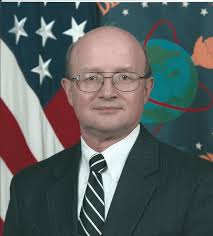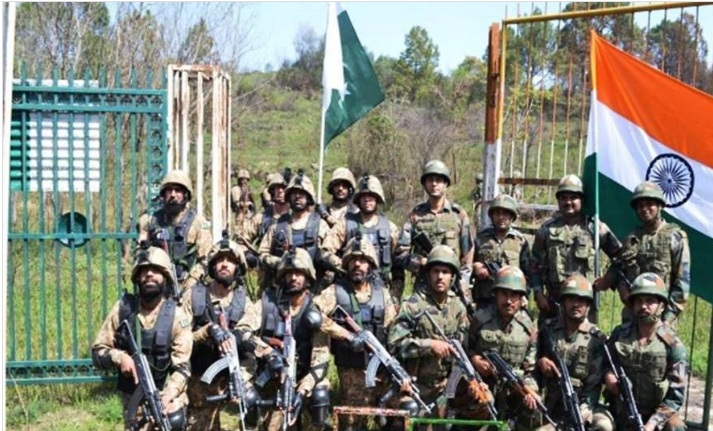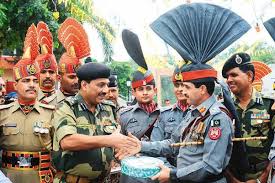
Hardly a month goes by without some tit-for-tat rhetorical exchange between the armies of India and Pakistan. Once in a while, a skirmish takes place between their armies. Sometimes, the air forces are drawn into the combat zone as happened not that long ago in Balakot.

It’s very difficult to get an objective assessment of their military capabilities by reading their military histories or studying the statements from their army chiefs. I recently had a chance to talk to Colonel (retired) David Smith of the US Army. He has twice served as the US army attaché in Pakistan. Earlier, he attended the Command and Staff College at Quetta which predates the partition of British India. After his assignments in Pakistan, he also spent time with US officers in India’s equivalent staff college in Wellington, Tamil Nadu.
His impressions of the military capabilities of the two warring siblings are recorded in two analytical works that evaluate not only the curriculum of the staff colleges but also the quality of education being imparted to the officers who study there. "The Wellington Experience: A Study of Attitudes and Values in Indian Army” has just been published by the Stimson Center in Washington, DC, where Smith serves as a Senior Fellow. Two years ago, his book “ The Quetta Experience: Attitudes and Values within Pakistan's Army" was published by the Wilson Center.
I put eight questions to Colonel Smith. These questions are listed below along with a summary of his answers.
Faruqui: In both countries, the army dominates the three branches of service. Why?
Smith: Both armies are derived from the British Indian army, whose purpose was not just to help fight the Empire’s wars outside the continent but also to help preserve the Raj by aiding civil authorities.
Faruqui: Why has the Indian army never mounted a coup while its counterpart has mounted at least four?
Smith: Prime Minister Nehru took a series of steps to establish civilian authority over the army, which he considered an instrument of colonial rule. He stayed in power from 1947 to 1964 and created a tradition that continues to this day. From Day 1, Pakistan was the smaller power and felt insecure. Jinnah passed away within 13 months of Pakistan’s founding. Prime Minister Liaquat Ali Khan was assassinated three years later. In the same year, Ayub Khan was appointed the commander-in-chief of the army. He mounted a coup in 1958 and stayed in power until 1969. Since then, the army has had a permanent place in the country’s politics.
Faruqui: It seems that neither army is lacking in self-confidence. In your view, which army is better in combat effectiveness?
Smith: Combat effectiveness consists not just in the “bean counting” of personnel and equipment inventories but also in strategy, tactics and operations. Rigorous training is a must as is jointness among the services. Unfortunately, neither army excels in training or jointness. During the 1965 and 1971 wars, the three branches of the military in each country fought their separate wars. Military operations in the warring siblings are run as “stovepipes.”
Faruqui: In both staff colleges, you state the officers indulge in rote learning. The curriculum does not introduce them to modern strategy and tactics. They are both descendants of the British army. But the British army does not indulge in rote learning, nor has it stayed unchanged in terms of strategy or tactics. What explains this non-creative mind set in India and Pakistan?
Smith: The primary purpose of the staff colleges seems to be to screen officers for promotion, not to impart knowledge. Officers are encouraged to submit “school solutions,” and copies of these “pinks” are readily available to them. Essentially, this amounts to cheating. Everyone knows it takes place. It’s not discouraged. One might even say it’s been institutionalized.

Faruqui: Is there any evidence that officers at these staff college learn any lessons from their wars?
Smith: There is no such evidence in either staff college. Both armies are reluctant to air past failures.
Faruqui: In your view, did the clash of the Indian and Chinese armies in Ladakh herald a serious conflict that could lead to a full-fledged war between the two countries or was it a minor border skirmish?
Smith: It’s unlikely to lead to a full-fledged war. The area is of minor importance to China. However, China is unlikely to back down. India made a strategic miscalculation in August 2019 when it annexed the area. In the bigger scheme of things, this is a minor skirmish for China. But it is also an abject lesson for India.
Faruqui: General Bajwa, while addressing the graduating class at the PMA in Kakul, said that the Pakistani military had performed much better against the five-time bigger Indian military in Kashmir. How much comfort should Pakistanis derive from that statement?
Smith: This was unhelpful bombast with little basis in fact. The incident revealed many shortcomings on both sides, mostly in their air forces. Pakistan was lucky to have shot down an IAF fighter and captured a pilot. It may not be so lucky in the future.

Faruqui: Both countries are constantly at logger heads and are almost consistently trading accusations of terrorism, the most dramatic ones being those from Imran Khan’s NSA in a televised interview with veteran Indian journalist Karan Tapar in which he accused India of being behind the attacks on the army public school in Peshawar. How likely is war going to break out between the siblings in the next five years? Will nuclear weapons prevent war from breaking out or precipitate it?
Smith: Pakistan’s incursion into Kargil in 1999 when General Musharraf was the army chief showed that it was willing to take a calculated risk despite India’s nuclear weapons capability. Similarly, when the Indian parliament was attacked by Pakistani-sponsored terrorists in December 2001, India also took a calculated risk by deploying hundreds of thousands of troops on the Pakistani border. The next terrorist attack, let’s call it Move 1, could trigger a strong counter-response by the attacked country, let’s call it Move 2. The big question is: Will there be a Move 3? And, if there is a Move 3, what will be its scale and intensity?
As we concluded the discussion, I was left with the awful feeling that both countries continue to live in a state of tenuous peace. A terrorist act, carefully timed and targeted, could unleash full-scale war. That war could easily lead to a devastating nuclear exchange that neither country would survive. In fact, such an event will cause horrific damage to the world’s population.

It’s very difficult to get an objective assessment of their military capabilities by reading their military histories or studying the statements from their army chiefs. I recently had a chance to talk to Colonel (retired) David Smith of the US Army. He has twice served as the US army attaché in Pakistan. Earlier, he attended the Command and Staff College at Quetta which predates the partition of British India. After his assignments in Pakistan, he also spent time with US officers in India’s equivalent staff college in Wellington, Tamil Nadu.
His impressions of the military capabilities of the two warring siblings are recorded in two analytical works that evaluate not only the curriculum of the staff colleges but also the quality of education being imparted to the officers who study there. "The Wellington Experience: A Study of Attitudes and Values in Indian Army” has just been published by the Stimson Center in Washington, DC, where Smith serves as a Senior Fellow. Two years ago, his book “ The Quetta Experience: Attitudes and Values within Pakistan's Army" was published by the Wilson Center.
I put eight questions to Colonel Smith. These questions are listed below along with a summary of his answers.
Faruqui: In both countries, the army dominates the three branches of service. Why?
Smith: Both armies are derived from the British Indian army, whose purpose was not just to help fight the Empire’s wars outside the continent but also to help preserve the Raj by aiding civil authorities.
Faruqui: Why has the Indian army never mounted a coup while its counterpart has mounted at least four?
Smith: Prime Minister Nehru took a series of steps to establish civilian authority over the army, which he considered an instrument of colonial rule. He stayed in power from 1947 to 1964 and created a tradition that continues to this day. From Day 1, Pakistan was the smaller power and felt insecure. Jinnah passed away within 13 months of Pakistan’s founding. Prime Minister Liaquat Ali Khan was assassinated three years later. In the same year, Ayub Khan was appointed the commander-in-chief of the army. He mounted a coup in 1958 and stayed in power until 1969. Since then, the army has had a permanent place in the country’s politics.
Faruqui: It seems that neither army is lacking in self-confidence. In your view, which army is better in combat effectiveness?
Smith: Combat effectiveness consists not just in the “bean counting” of personnel and equipment inventories but also in strategy, tactics and operations. Rigorous training is a must as is jointness among the services. Unfortunately, neither army excels in training or jointness. During the 1965 and 1971 wars, the three branches of the military in each country fought their separate wars. Military operations in the warring siblings are run as “stovepipes.”
Faruqui: In both staff colleges, you state the officers indulge in rote learning. The curriculum does not introduce them to modern strategy and tactics. They are both descendants of the British army. But the British army does not indulge in rote learning, nor has it stayed unchanged in terms of strategy or tactics. What explains this non-creative mind set in India and Pakistan?
Smith: The primary purpose of the staff colleges seems to be to screen officers for promotion, not to impart knowledge. Officers are encouraged to submit “school solutions,” and copies of these “pinks” are readily available to them. Essentially, this amounts to cheating. Everyone knows it takes place. It’s not discouraged. One might even say it’s been institutionalized.

Faruqui: Is there any evidence that officers at these staff college learn any lessons from their wars?
Smith: There is no such evidence in either staff college. Both armies are reluctant to air past failures.
Faruqui: In your view, did the clash of the Indian and Chinese armies in Ladakh herald a serious conflict that could lead to a full-fledged war between the two countries or was it a minor border skirmish?
Smith: It’s unlikely to lead to a full-fledged war. The area is of minor importance to China. However, China is unlikely to back down. India made a strategic miscalculation in August 2019 when it annexed the area. In the bigger scheme of things, this is a minor skirmish for China. But it is also an abject lesson for India.
Faruqui: General Bajwa, while addressing the graduating class at the PMA in Kakul, said that the Pakistani military had performed much better against the five-time bigger Indian military in Kashmir. How much comfort should Pakistanis derive from that statement?
Smith: This was unhelpful bombast with little basis in fact. The incident revealed many shortcomings on both sides, mostly in their air forces. Pakistan was lucky to have shot down an IAF fighter and captured a pilot. It may not be so lucky in the future.

Faruqui: Both countries are constantly at logger heads and are almost consistently trading accusations of terrorism, the most dramatic ones being those from Imran Khan’s NSA in a televised interview with veteran Indian journalist Karan Tapar in which he accused India of being behind the attacks on the army public school in Peshawar. How likely is war going to break out between the siblings in the next five years? Will nuclear weapons prevent war from breaking out or precipitate it?
Smith: Pakistan’s incursion into Kargil in 1999 when General Musharraf was the army chief showed that it was willing to take a calculated risk despite India’s nuclear weapons capability. Similarly, when the Indian parliament was attacked by Pakistani-sponsored terrorists in December 2001, India also took a calculated risk by deploying hundreds of thousands of troops on the Pakistani border. The next terrorist attack, let’s call it Move 1, could trigger a strong counter-response by the attacked country, let’s call it Move 2. The big question is: Will there be a Move 3? And, if there is a Move 3, what will be its scale and intensity?
As we concluded the discussion, I was left with the awful feeling that both countries continue to live in a state of tenuous peace. A terrorist act, carefully timed and targeted, could unleash full-scale war. That war could easily lead to a devastating nuclear exchange that neither country would survive. In fact, such an event will cause horrific damage to the world’s population.
